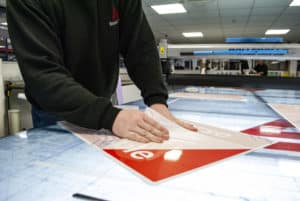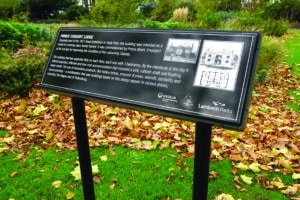If all graffiti could be as artistic as Banksy, people might not have such a problem with it. Unfortunately, a lot of graffiti is rude, unsettling or just unsightly and it is something that should be abolished. Graffiti can ruin the family friendly feel of villages or the feeling of safety in cities and is associated with crime and bad behaviour.
The cost of vandalism…
Beyond this, vandalism can destroy personal, company and local government property. Even if the attacked item is not destroyed, it nonetheless is very inconvenient and costly to remove. Network Rail spends approximately £5million per year cleaning up graffiti, while the London Underground spends close to a staggering £10million per year, proving that vandalism is a huge problem. Markings that obscure the purpose of the sign can be dangerous so it is essential that the messages of road signs or warnings are clear to the public.
At the Stocksigns Group we aim to reduce the inconvenience and cost associated with graffiti by offering signage that is graffiti and permanent marker resistant. These qualities are particularly useful as removing graffiti rapidly has been shown to help reduce the likelihood of re-offending, as vandals thrive off the chance to showcase their work.
How can graffiti resistant products help…
Although no sign can claim to be completely damage proof, we offer a wide range of graffiti resistant products. One of these products is Vitreous Enamel, a product that has been present for over 100 years and is renowned as one of the most hard-wearing, vandal resistant signage options.
The process of creating a Vitreous Enamel sign involves the fusion of an image onto glass coated steel in a furnace at temperatures up to 800oC, creating a sign with a lifespan of over 40 years. The finished sign has a high quality, vibrant, lustrous finish with fire retardant and fade resistant qualities,making them a popular choice for places where signs need to be long lasting in harsh environments.
Stocksigns can also supply a range of durable signs which provide many of the benefits of Vitreous Enamel. With vibrant colours, hard-wearing coatings and various metal options, they are robust and convenient vandal resistant signage and will last for over 10 years.
Extend the life of your signs…

Managing Director of the Stocksigns Group, Danny Adamson said, “Vandalism always poses problems in society, so we aim to maintain and discourage damage to signage with our range of vandal resistant solutions, suitable for all levels of requirements. Recovering signs from incidences of graffiti creates a much longer lifespan making them more cost efficient. Speed of removal also decreases time spent cleaning and restoring signage, diverting staff resources and money back to areas that require them.”

